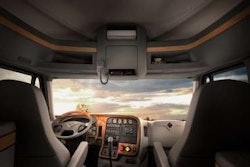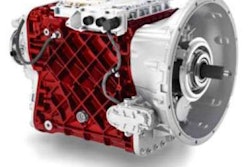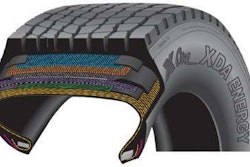With the trucking industry showing some early signs of recovery, Daimler Trucks North America says its customers are rewarding the company’s investment in fuel economy, higher payload and other improvements with enough new orders to fill its production schedule through the first half of 2010.
“We are also seeing customers expand their focus from the cost of the new 2010 emissions technology to the long-term value and payback of selective catalytic reduction,” says Mark Lampert, senior vice president-sales and marketing for DTNA. “And with fuel prices edging up, the return on SCR improves.”
DTNA and its Daimler Trucks parent cut back on capital expenses in 2009 to respond to a similarly dramatic collapse in revenues for the year, but it did so without cutting back on its investments in the future, says Andreas Renschler, head of the worldwide Daimler Trucks and Daimler Buses organization. “We did not cut back on our product plan. In fact, we actually increased our investment in R&D.”
With the worst economic crisis in the post-war era coming to an end, “we’re launching the biggest product offensive in our history,” Renschler says. “Over the next four years, we will practically renew our entire product portfolio. In the next 24 months alone, we have 140 market rollouts of new vehicles and major components.”
Daimler’s adoption of SCR technology in North America is proving to be the right course, says Martin Daum, DTNA president and CEO. “The 2010 Cascadia in combination with the DD15 or DD13 engine and our BlueTec SCR system is consistently delivering up to 5 percent gains in fuel efficiency over our 2007 vehicle, and in some cases more.”
DTNA’s announcements on March 25 include development and availability of Virtual Technician, a new program of real-time system insights that will diagnose problems with specific trucks, schedule the truck for repair and promptly notify the driver of a convenient dealer or service repair facility.
Daimler also announced that its Freightliner Business Class M2 hybrid and Freightliner Custom Chassis Corp. (FCCC) MT-55 hybrid-electric walk-in van (WIV) chassis are eligible to receive voucher funding through the California Hybrid Truck and Bus Voucher Incentive Project (HVIP). FCCC MT-55 hybrid-electric chassis are eligible to receive $20,000 in vouchers toward their purchase, Freightliner Business Class M2 106 hybrid delivery and utility vehicles are eligible for up to $25,000 in voucher funding, and Freightliner Business Class M2 106 hybrid tractors are eligible for up to $35,000 in voucher funding. Additionally, the first hybrid vehicle purchased is eligible for an additional $5,000 credit per customer.
All eligible Freightliner and FCCC vehicles will be equipped with U.S. Environmental Protection Agency 2010-compliant Cummins 6.7 liter ISB engines and Eaton parallel electric hybrid systems, which enable the truck to operate using the diesel engine alone, or in combination with the hybrid-electric motor. The hybrid-electric motor provides additional power to launch the truck, improving fuel economy and reducing emissions in high stop-and-go operations. Freightliner hybrid trucks equipped with electronic PTO further reduce fuel consumption by using the hybrid motor to power the PTO.
Daimier’s Western Star subsidiary announced the availability of lightweight spec options for its 4900 series trucks. Suited for liquid and dry bulk applications, as well as agricultural markets, customers can select from more than 200 lightweight options to spec their tractors, saving up to 1,200 pounds-per-load. Lightweight options include a variety of aluminum parts including rear engine supports, clutch housings, air tanks, a fifth wheel and extruded cross members. In addition, Western Star offers Meritor Steelite brake components and a wide range of single-frame rail options that meet strength requirements without the added weight.











